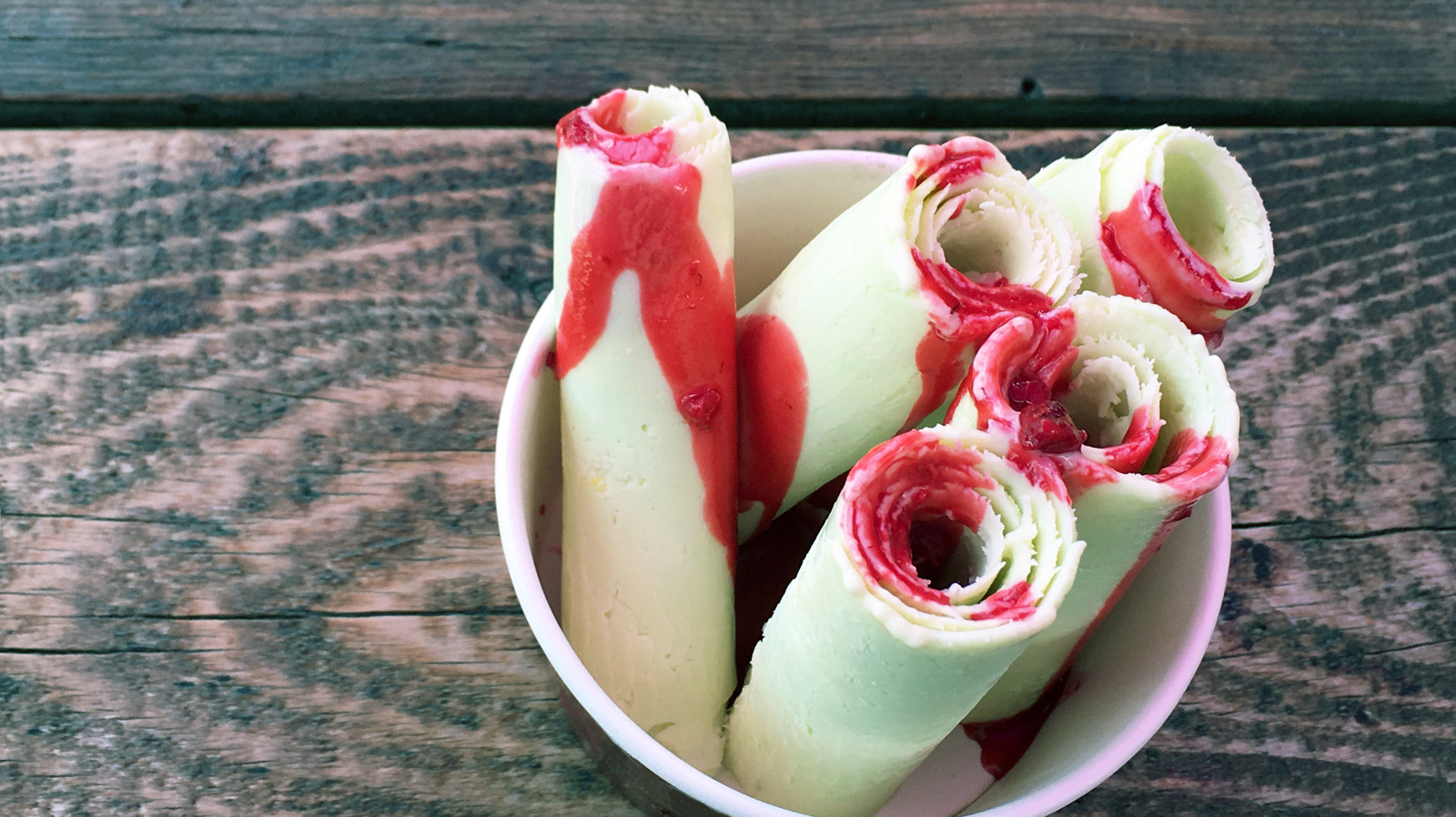We may receive a commission on purchases made from links.
Ice cream fans are lucky. Beyond your traditional scoops and sundaes, there are a wide variety of creative ways to enjoy this confection. You’ve got the knickerbocker glory from the United Kingdom, taiyaki soft-serve from Japan, and affogato from Italy — not to mention an infinite number of flavors inspired by local culture and cuisine. One more unique way to enjoy the frozen treat is rolled ice cream, which originated in Thailand.
Rolled ice cream is made by pouring the liquid base of ice cream on a chilled tray or slab, adding mix-ins, and freezing it before rolling it in strips using a flat spatula. These strips are placed in a bowl with the rolled edge facing up, giving it an appearance reminiscent of a floral bouquet. Now, while it may look complex, rolled ice cream is fairly easy to make at home, and is actually one of the many ways to make homemade ice cream without a machine. Yes, rolled ice cream makers are available for purchase, like the Whynter 0.5-Quart Stainless Steel Rolled Ice Cream Maker, but you can also keep it simple and affordable with just your freezer and a sheet pan.
Normally, you would pour the liquid ice cream base onto a sheet pan, and place it in the freezer until the ice cream is cold enough to roll. But to speed up the process, purchase some dry ice pellets. To use the dry ice pellets, pour them into a second baking pan, and place the baking pan with the ice cream on top. This will greatly reduce the freezing time (which can take up to four hours in the freezer) and eliminate worries about freezer space.
Tips for using dry ice to make rolled ice cream
Dry ice is pretty incredible and can be used for everything from recarbonating flat sparkling water to creating spooky fog effects. However, while it may be readily available at your nearest grocery store, it can be dangerous to use if you don’t take proper precautions.
Unlike regular ice, which of course is just frozen water, dry ice is actually solid carbon dioxide and is naturally cold enough to cause frostbite if you touch it with your bare skin. Because of this, always wear gloves — not just any gloves, but insulated gloves that are designed to protect against extreme cold — and safety goggles when handling dry ice. And never, ever try to eat dry ice!
When it comes to making rolled ice cream, you may have to ask yourself if all this trouble is worth it. Your main considerations will be time, space, and simplicity. Placing sheet pans in the freezer can take up a lot of space, and again, there’s a good amount of waiting time before you can enjoy your treat. On the other hand, if you go the dry ice route, there are now more safety precautions to consider for this simple recipe. If using dry ice, you may notice that your rolled ice cream mixture is actually a little too solid, making rolling difficult. In this case, simply remove the ice cream tray from the dry ice and wait for it to thaw just a little.






